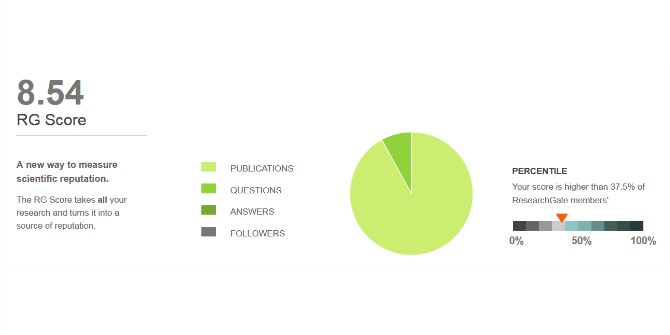 Ted Bergstrom writes of his involvement requesting copies of library contracts with several major publishers in order to compare journal pricing data for bundled journal access. The significant differences that exist across universities for the same content and between publishers raises some major questions on the effectiveness of such pricing models. He finds that the differences in bundle prices depend largely on differences in historical expenditure from the late 1990s. But the clues that publishers used a decade ago in their guessing game with libraries are in need of a signficant update.
Ted Bergstrom writes of his involvement requesting copies of library contracts with several major publishers in order to compare journal pricing data for bundled journal access. The significant differences that exist across universities for the same content and between publishers raises some major questions on the effectiveness of such pricing models. He finds that the differences in bundle prices depend largely on differences in historical expenditure from the late 1990s. But the clues that publishers used a decade ago in their guessing game with libraries are in need of a signficant update.
Most of the work that goes into a published journal article is done for free—by authors and referees who are paid nothing. The costs of copy-editing and type-setting have fallen significantly with new technology and the internet has eliminated the need for paper editions. Yet journal subscription prices charged by for-profit publishers have risen steadily at about 5% per year for the last decade. On average, the subscription prices listed by for-profits are three or four times as high per article or per citation as those charged by non-profit professional societies. (See full statistics and analysis at www.journalprices.com)
Defenders of commercial publishing maintain that this comparison is misleading because large for-profit publishers offer “discounts” to universities by selling access to the publisher’s entire list of journals for a single lump sum price that is significantly lower than the sum of individual prices. These “bargains” are known to librarians as Big Deals.
Since many non-profit publishers offer discounts for journal bundles, it seems appropriate to compare the prices per citation per article of the for-profit publishers’ Big Deals with those offered in non-profit bundles. This is easier said than done. Large commercial publishers have insisted on confidentiality clauses that forbid libraries to tell anyone what they paid for their bundles.
Extract from the Summary Statistics of Journal Subscription Prices 2013
This is a selection of the data from Bergstrom and McAfee’s Journal Cost-Effectiveness 2013 edition. Note: Statistics are calculated using subscription prices for 2013 and citation and page counts for the years 2004-2011 — calculation date is 9/29/2013.
Most U.S. states have open records laws that require state-funded institutions to reveal information about their financial transactions. Some colleagues and I used these laws to request copies of contracts with several major publishers for bundled journal access. (Tim Gowers initiated a similar effort to find the prices that UK universities pay for their Elsevier bundles. His results, along with an intriguing discussion, are found here.) Elsevier sued Washington State University and asserted that releasing a copy of their Big Deal contract would “reveal trade secrets” and give “unfair advantage” to their rivals. The judge in charge was not impressed and ruled that state law required the university to reveal their contract. We collected contracts from about 150 universities with each of several publishers and published the results of this effort in a recent paper in the Proceedings of the National Academy of Sciences. A copy available without a paywall is available here.
Some of the results:
- Even with the discounted Big Deal bundles, Elsevier charges typical research universities in the US about 3 times as much per citation as non-profit publishers. But other big commercial publisher bundles are even worse bargains. Wiley’s bundled costs more than twice as much per citation as Elsevier’s. Taylor & Francis, Emerald, and Sage prices per citation are more than 10 times those of the nonprofits.
- Bundle prices vary widely between universities. Much of this variation cannot be explained by such differences as enrolment, number of PhD’s granted, or presence of a medical school.
- Colleges and universities that do not focus on research and do not offer PhD’s get much better bargains from the major commercial publishers. The average prices charged to these by Elsevier, Springer, and Wiley are about 1/10 of the prices they charge to research universities. In contrast, non-profits charge the non-research institutions about ¾ as much as research universities. For non-research institutions, Elsevier’s prices per citation are similar to those of the nonprofits. The other for-profit publishers charge non-research institutions “only” 2 to 4 times as much as do the non-profit publishers.
Why are the commercial publishers so eager to conceal their prices from the public view? We suspect that part of the reason is that they do not want scholars, librarians, and university administrators to know just how high their prices are compared to costs as measured by the prices of non-profits. We also suspect that they do not want some universities to find out that they are paying much more than similar universities for the same package.
Profit-maximizing publishers will attempt to sell access to each buyer for a price close to the most that buyer is willing to pay. Thus journal sales becomes a guessing game in which publishers try to set each buyer’s price just a little below that buyer’s maximum willingness to pay. In the early days of online publishing, publishers had a reliable clue of a library’s willingness to pay for their list of journals. This clue is the amount that a library spent on paper journals in the late 1990’s, before internet publishing became the standard. In the initial Big Deal contracts, publishers simply calculated the total amount that each library had been spending on paper subscriptions. They then offered universities 5-year contracts that started with a price 10-15% greater than their expenditure on paper and with a 7% annual increase. For this price, the university would continue to receive the paper subscriptions it had in the past and would have electronic access to the publisher’s entire list. In the absence of hard bargaining on the university’s part, this contract would be renewed at the end of 5 years with new 5-year contracts with annual price increases on the order of 5%.
The differences in bundle prices that libraries pay today depend largely on differences in historical expenditure from the late 1990s. Further differences have arisen because some institutions have bargained more successfully than others. Apparently the clues that publishers were able to use a decade ago in their guessing game with libraries are not so accurate any more. If publishers were consistently guessing well, we would expect that most major libraries would now have full-fledged Big Deals with the major publishers. But this has not happened. According to a recent survey by the Association of Research Libraries, the share of research libraries in North America who have them has declined between 2006 and 2012, from 25% to 20% for Elsevier, from 38% to 30% for Springer, from 29% to 16% for Wiley, and from 16% to 14% for Taylor & Francis. In contrast, the non-profit American Chemical Society has Big Deals with about 60% of these libraries.
These facts are consistent with economic theory, which suggests that when neither side knows how much the other values a contract, bargaining efforts will frequently fail to reach efficient outcomes. Thus many libraries make do with less than full access to commercial publishers’ bundles, and publishers lose revenue that they might have gained by offering more moderate prices. If Big Deal contracts had become nearly universal among research libraries, it could be argued that although commercial publishers are extracting monopoly profits from the university community, at least they are doing so efficiently.
But as things stand, we are getting the worst of both worlds. The university community is paying a large ransom to monopolistic publishers, but is still not getting full access to the output that its own scholars produce and evaluate without pay.
Feature image credit: Urval av de bocker som har vunnit Nordiska radets litteraturpris by Johannes Jansson CC-BY-2.5-dk (Wikimedia)
Note: This article gives the views of the authors, and not the position of the Impact of Social Science blog, nor of the London School of Economics. Please review our Comments Policy if you have any concerns on posting a comment below.
Ted Bergstrom is an economist at the University of California Santa Barbara who usually works on microeconomic theory and the provision of public goods, and occasionally on the economics of scholarly communication. He is one of the founders of the eigenfactor project and of the journal prices website at journalprices.com.









How robust is citation-based analysis when it comes to comparing publishers whose journal portfolios are slanted towards HSS vs those whose porfolios are primarily STM?
i liked this article it shows discrimination between universities which maybe should occur between profit and non profit universities but not at those extreme levels such as 1/10th of the price and such. hopefully this will reach some people and open their eyes